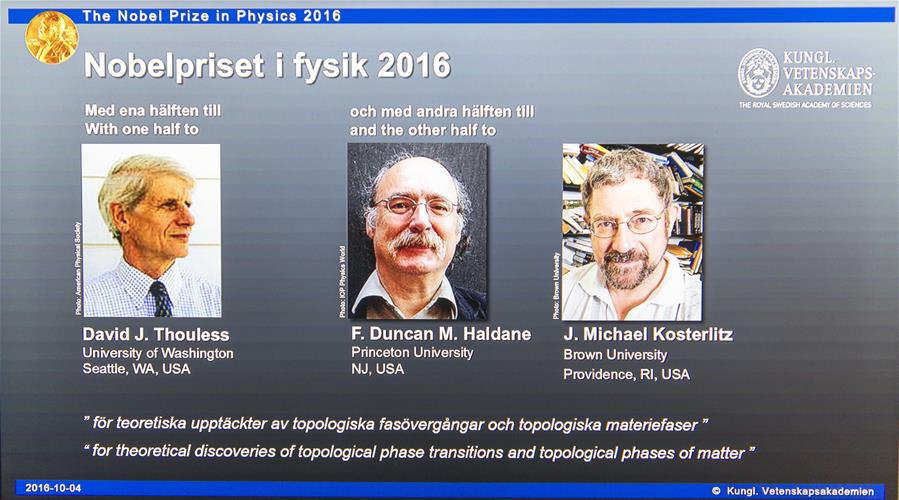Three scientists share 2016 Nobel Prize in Physics
Updated: 2016-10-05 07:41
(Xinhua)
The Nobel Prize in Physics 2016 was divided, with one half awarded to David J. Thouless, the other half jointly to F. Duncan M. Haldane and J. Michael Kosterlitz "for theoretical discoveries of topological phase transitions and topological phases of matter."
Through a telephone interview, Haldane said he was "very surprised" at the news, adding that he was glad that their discoveries found something many previously overlooked, and they unveiled "more possibilities for looking for new materials." He emphasized that a lot of work was still ongoing.
"This year's laureates opened the door on an unknown world where matter can assume strange states. They have used advanced mathematical methods to study unusual phases, or states, of matter such as superconductors, superfluids or thin magnetic films," the Royal Academy of Sciences said in an official statement.
"Thanks to their pioneering work, the hunt is now on for new and exotic phases of matter. Many people are hopeful of future applications in both materials science and electronics," it added.
"Over the last decade, this area has boosted frontline research in condensed matter physics, not least because of the hope that topological materials could be used in new generations of electronics and superconductors, or in future quantum computers," the statement said.
"Current research is revealing the secrets of matter in the exotic worlds discovered by this year's Nobel laureates," it added.
Thouless is currently emeritus professor at the University of Washington. Haldane is Eugene Higgins professor of Physics at Princeton University, while Kosterlitz is Harrison E. Farnsworth professor of Physics at Brown University.
This year's prize amount is 8 million Swedish krona ($0.93 million), with one half to Thouless and the other half to be shared between Haldane and Kosterlitz.

